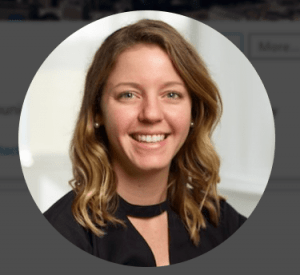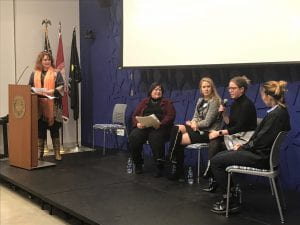When I first heard I would have to complete an ePortfolio as part of my program at Northeastern, I wasn’t sure if it would be valuable to me. It instead felt like any effort I put into it would be duplicative of the effort I was putting into my LinkedIn profile and resume. I was working full-time while trying to balance school and other priorities, so it was hard for me to even figure out when I’d have time for this.
I also felt like the ePortfolio would only be valuable for someone looking for a job – something I had no plans of doing because I was already comfortably employed. Well, now being on the other side of my degree, I am so happy I had and still have this ePortfolio.
Leveraging my ePortfolio during the interview process
When I started my program, I was working for Dell Technologies on the Corporate Communications team driving executive communications for one of their senior leaders. Like I said, I wasn’t looking for a new job – I loved working at Dell! Towards the end of my program, I got the opportunity to lead internal and brand communications for Blueprint Medicines…an opportunity I could not pass up.
For my interviews at Blueprint, I put together a portfolio of my work from Dell Technologies and sprinkled in some content from my ePortfolio at Northeastern University. I felt like if I was competing against anyone else for this position, I needed to bring everything I could to the table that may set me apart. Being able to quickly, and eloquently, talk about my school work and how it has strengthened my skills was much easier because of my ePortfolio; I organized my ePortfolio in a way that only showed what I felt was most important to my education and most valuable to strengthening my abilities.
Leveraging my ePortfolio on-the-job
Now that I’m settled into my role at Blueprint, I still refer to my ePortfolio. And for me, this is where the real value comes into play. I designed my ePortfolio in a way that would allow me, and others, to navigate it quickly. Using headline formats for project names, 1-3 sentence summaries to describe the project and then a direct link to my work helps achieve this.
Today, I refer to my ePortfolio when I’m facing an organizational challenge at work and want to look for a company going through something similar. I’m able to skim through my ePortfolio to find a case study featuring a similar situation and see what my recommended solution was. Blueprint is growing rapidly and part of my mission is to maintain and evolve its already rich culture. As we grow, we’re bringing on new functions of the business that didn’t exist prior so I’m figuring out how to keep everyone informed, connected and engaged to each other, our culture and our purpose.
In my Communication Networks and Managing Information course, the Sunbelt University case featured a similar situation. In my recommendation plan, I suggested the dean of the school begin sending out a monthly newsletter to inform, connect and engage the Sunbelt University employees on the strategy, vision and mission of the college. I’m starting to design a newsletter which takes a similar approach for Blueprint and can accomplish this quicker because I have a lot of the tools and templates in my ePortfolio.
Leveraging my ePortfolio during my lifelong learning journey
My one piece of advice for anyone else creating an ePortfolio is to keep it simple and easy to navigate. You’re going to approach many situations in your career when you need to get something done quickly. Keeping the information in your ePortfolio on the ‘need to know’ and not ‘nice to know’ landscape will give you the ability to get exactly what you’re looking for faster than you thought possible.
Posted by Jessica Kline, CPS’19
 Note: Jessica is the Associate Director, Internal & Brand Communications at Blueprint Medicines. She was honored at the 1st annual ePortfolio Showcase on October 28 — along with Josh Gelinas, Jingyi Liu, and Liz McCarthy — for the outstanding ePortfolios from 2018-19.
Note: Jessica is the Associate Director, Internal & Brand Communications at Blueprint Medicines. She was honored at the 1st annual ePortfolio Showcase on October 28 — along with Josh Gelinas, Jingyi Liu, and Liz McCarthy — for the outstanding ePortfolios from 2018-19.